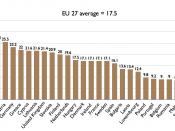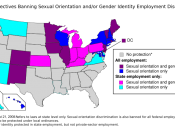To what extent have changes in legislation achieved equality in the labour market? With reference to 'gender'?In this essay I will be examining the concept of equal opportunities in relation to the diverse work force in Britain. This essay will develop a comprehension and recognition of the anti- discriminatory legislations, the implementation of this and the effectiveness of it within the labour market: it will also principally concentrate on gender inequalities in employment.
There are employers that differentiate in the treatment between male and female in workplace is called gender discrimination, and the law prohibits it. According to Giddens " employer that treats a women with assertive personality in a different manner than if she had been a man is guilty of sex discrimination". (P.158)Both men and women employees should be treated equally in the workplace or otherwise the employer will be penalised and the law will take its process.
For many occupations there are still traditional perceptions of 'women's work' and 'men's work', this could be referred to occupational segregation. The idea that men and women experience different working practices contradicts the view that organisations are neutral and objective. Perceptions are beginning to fade out but old habits are hard to get rid of. According to Giddens (2001) there are three main areas of inequalities at work for women such as occupational segregation, women in part-time posts, and the wage gap. He suggest that occupational segregation signifies that men and women are seen to be in different roles, which are traditionally male and female work. There are two components related to occupational segregation called vertical and horizontal. When women are concentrated in roles of low authority and cannot work their way up to higher positions and males are occupying the powerful and leading roles, it is referred to as...


